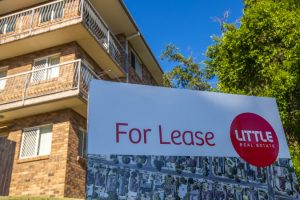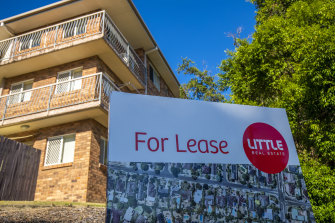Rent assistance: The ticking time bomb threatening future prime ministers

Sometimes, you just don’t know where to start. The Prime Minister’s comments on the Today Show when asked by journalist Allison Langdon what the recent budget does for renters were so problematic, it’s not hard to see why an entire generation is outraged.
But outrage should be properly founded.
Some renters buy homes, but most buyers are either investors or existing homeowners who are moving house.Credit:Domain
It’s simply not accurate that Morrison said anyone struggling with rent should just go buy a house, akin to American heiress Paris Hilton’s “stop being poor” T-shirt or Kim Kardashian’s recent exhortation to people to just “work hard”.
More accurately, Mr Morrison’s initial response was that the “best way to support people who are renting a house is to help them buy a house”.
That is deeply problematic – which we will get to – but the exchange continued when Langdon interjected to clarify that she was not asking about homeownership policies but rather “rental relief”, specifically.
“I know, but that’s my point,” the Prime Minister continued. “People who are buying houses are renters.”
Well, no, actually, Prime Minister.
According to the Bureau of Statistic’s latest housing finance figures, just 31 per cent of loans written to owner-occupiers in the month of February went to first-time buyers, ie renters becoming owners.
And that’s not counting the rather substantial number of loans written to investors. By value, owner-occupiers took out $21.53 billion worth of loans in February, of which $4.85 billion went to first-time buyers. Investors, however, took out another $10.75 billion of housing loans on top of that – more than twice those of first time buyers.
So, the accurate thing to say is that while some renters buy homes, most home purchasers in any given month are actually either investors or existing homeowners who are moving house.
A more accurate response to the entirely reasonable question of what this budget does for renters would have been: “Not much, sorry, Ally. We didn’t actually think much about that issue in this budget.”
And Morrison would be far from alone in that. Indeed, governments of both political stripes have failed over multiple decades to address the issues confronting renters, particularly low-income renters.
But rental relief is now sorely needed, particularly for low-income Australians. It’s a ticking time bomb for both for renters and the budget. Let me explain.
The federal government pays about $5.3 billion a year in Commonwealth Rent Assistance (CRA) to about 1.3 million non-homeowning welfare recipients, including the unemployed, disabled and age pensioners.
Assistance is provided at a rate of 75 cents for every dollar in rent paid above a certain rent threshold, up to a maximum amount of $145.80 a fortnight for a single person with no children.
The problem is both the rent threshold and maximum amounts are indexed to rise with consumer price inflation only, and not rents.
According to a Productivity Commission analysis, consumer prices have increased about 75 per cent since 1995, but actual rents have almost tripled during that time.
If the 1995 rate of rent assistance had instead risen with actual rents, it would be closer to $210 today.
As the commission notes: “Over time … the CRA maximum payment amount has not kept pace with the rise in rents, which has outpaced inflation. As a result, the average share of rents covered by CRA has fallen. Further, the share of CRA recipients who received the maximum payment has steadily increased from around 57 per cent (representing about 566 000 recipients) in 2001 to 80 per cent (representing just over 1 million recipients) in 2018.”
As a direct result, fully two thirds of low-income renting households live in “rental stress”, spending more than 30 per cent of their income on rent.
So, what would a budget that did help renters look like?
It’s true that some renters do benefit from government assistance to let them borrow with smaller deposits. But those numbers are small each year compared to the total pool of renters.
For many low-income renters, it is increasingly true they will never own a home – both throughout their working lives and in retirement.
Home ownership has traditionally been a hidden pillar of our retirement system, but it is crumbling. More and more Australians are staring down the barrel of renting in retirement and the pressure to assist them will only grow.
The Productivity Commission has called for a 15 per cent increase in the maximum rent amount to make up for lost ground. The Grattan Institute has called for a 40 per cent increase and for the amount to be indexed to rents rather than consumer prices.
The Australian Council of Social Services is also calling for rent assistance to be benchmarked to actual rents by area and says a 50 per cent average increase in the maximum rent assistance rate is needed.
According to Ben Phillips, an economist at the Australian National University, increasing rent assistance by $70 a fortnight would cost about $2 billion a year.
The Productivity Commission praises rent assistance as “a well-targeted policy lever to assist low-income, low-wealth households who face the specific challenges associated with the private rental market”.
Public pressure is only likely to grow from here for that lever to be pulled. Future prime ministers would do well to come armed to post-budget interviews with a better response.
The Money with Jess newsletter helps you budget, earn, invest and enjoy your money. Sign up to get it every Sunday.
Most Viewed in Business
From our partners
Source: Read Full Article

